
How many types of paella are there? 10 different recipes for Paella
Paella is, without a doubt, the indisputable queen of all dining in Spain, since it is one of the dishes that, while not originally from Andalucia, has become one of the most traditional in the southern Iberian Peninsula. As happens with many other recipes, both Spanish and international, paella, while a traditional Valencian dish, does transcend borders, since there are as many types of paella as there are bars and restaurants throughout the country. Indeed, it is hard to find one that does not have this delicious dish or its tapas version on its weekly menu.
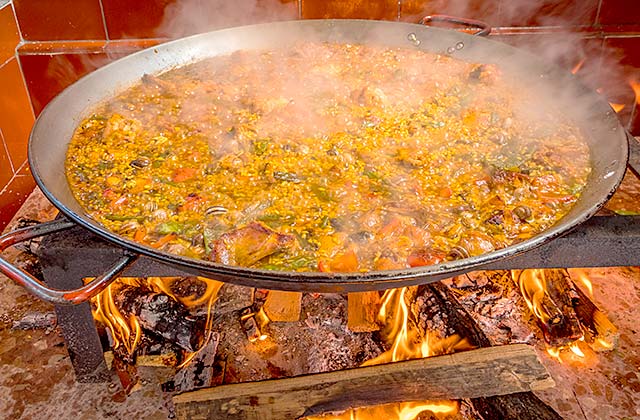
To travel through Spain and discover the number of paella and rice dish variations and recipes that exist is to learn about the gastronomic plurality of this very traditional national dish, so here are 10 different types of paella for you to adapt to your tastes:
Valencian Paella (the authentic)
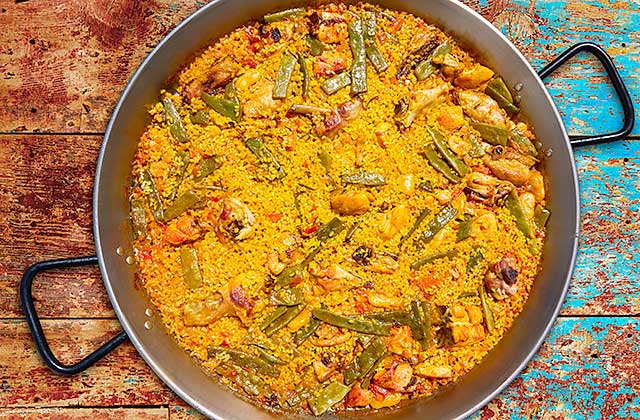
This is the typical Spanish paella. This recipe is the best known one throughout Spain and is prepared with a tomato, pepper, onion and garlic sofrito. Water must be measured well for this dry rice dish to be sure that the rice doesn’t become overdone. Specifically, if you want to prepare paella, use two glasses of water for each cup of rice. Rabbit is the premium meat used for this dish. If you come to Andalucia, try it with a good red wine, the perfect combination of Spanish flavour.
Meat Paella
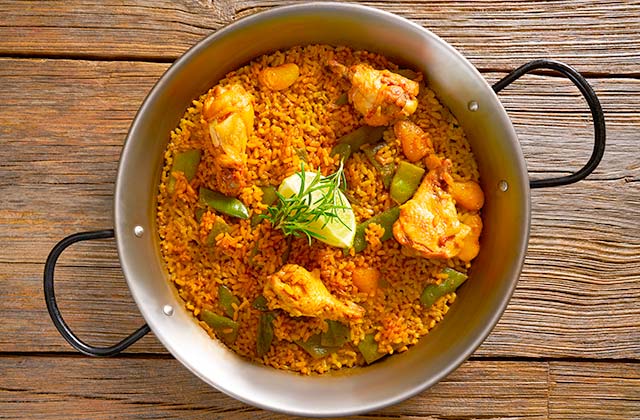
This is the typical Sunday paella in Spain. People often sunbathe in the countryside and make this recipe with chicken for their family. It is very important to add a good amount of black pepper and paprika so that the meat will absorb the flavour, in addition to red peppers and peas. It is always a good idea to cook this variety and if you come to Spain, make sure you order a dish with an accompaniment of olives. A perfect plan for eating out on weekends.
Seafood Paella
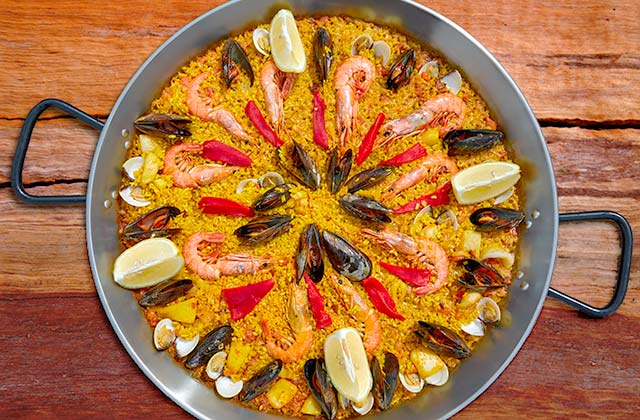
This is one of the recipes that best define Mediterranean cuisine. Also known as paella marinera, it tastes like iodine thanks to the seafood which gives you a taste of the ocean. It is usually prepared with squid, prawns, mussels and clams. It is one of the most popular dishes in coastal areas and, in summer, it is very commonly eaten on beach bars. You can’t visit a beach in Andalucia without trying the seafood paella.
Mixed Paella

Mixed paella combines two flavours: Meat and seafood. It is also one of the most popular dishes and is usually cooked in every house. It is made using the meat sofrito and then adding squid and prawns. It has a very strong taste as the tender meat takes on the flavour of the seafood. Perfect for eating out at any restaurant, this dish never fails to impress.
Black rice (arroz negro)
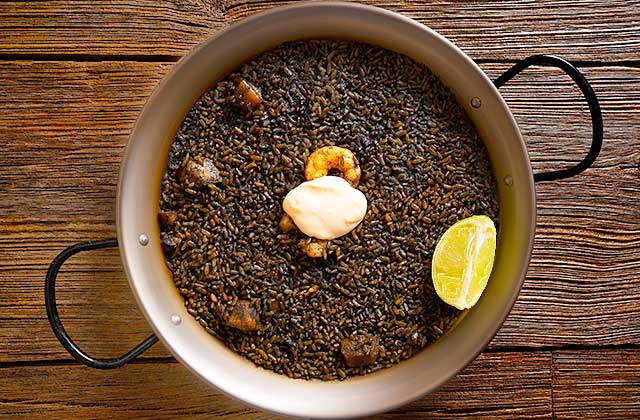
This variety is typical, especially in Galicia. It looks totally different from the rest, because the rice becomes black due to octopus or squid ink. The ingredients are the same as the seafood paella, but this additional affects not only appearance but also the taste. This characteristic has made this recipe one of the most sought after thanks to its originality. If you like strong tastes in your mouth, this is the paella for you; give it a try!
Vegetarian Paella
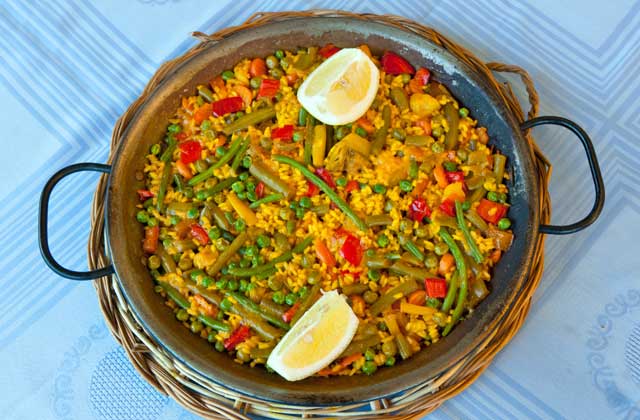
This variety, with its original recipe, was created mostly due to vegetarians. There are a growing number of people who refuse to consume animals and who have opted for this type of recipe so as not to refuse the typical Spanish dish. The basic ingredients are: artichokes, asparagus, mushrooms and olives. It’s a different combination which doesn’t detract from the original dish and you can try if you fancy a light lunch.
Lobster Paella
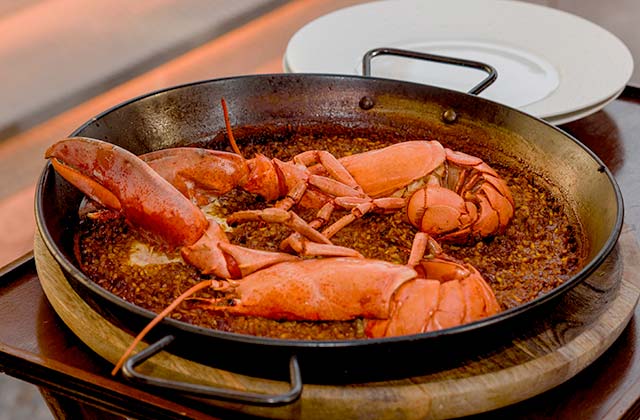
Although it may be classified together with seafood paella, its unusual flavour sets it apart. This is a very much sought after recipe which is cooked often in Huelva, becoming one of the top dishes. This province is well-known for its seafood and this variety is not usually mixed with other ingredients. If you come to this area, don’t forget to order this delicious treat for your taste buds. You won’t regret it.
Rice with pork in beer
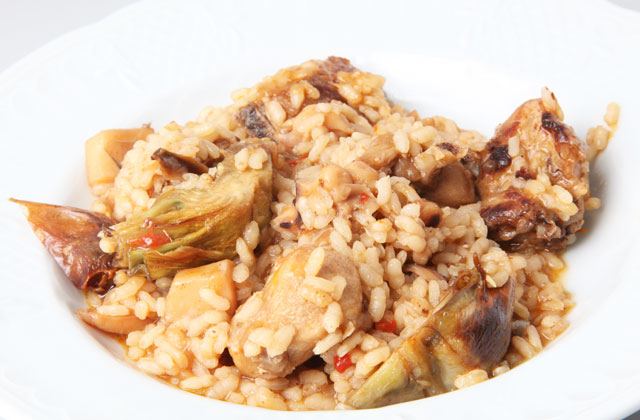
This paella is harder to find in restaurants but in coastal areas, it is often prepared upon request. Lean pork meat is used instead of chicken or rabbit, which gives a completely different texture from the rest. Part of the secret in this recipe is also beer which is added when frying the onions. The alcohol evaporates after five minutes but leaves that taste of barley soaked in rice. An interesting dish, it is served most often in summer.
White Paella
White paella is very simple dish to make which, nevertheless, achieves excellent results. The ingredients that accompany the rice this time are ham and salami. These are mixed without adding colouring, giving the dish a white appearance. A very typical variety in eastern Andalucia, it is usually served on many occasions as “tapas”, accompanying a beer or a summer red.
Paella / rice made to taste
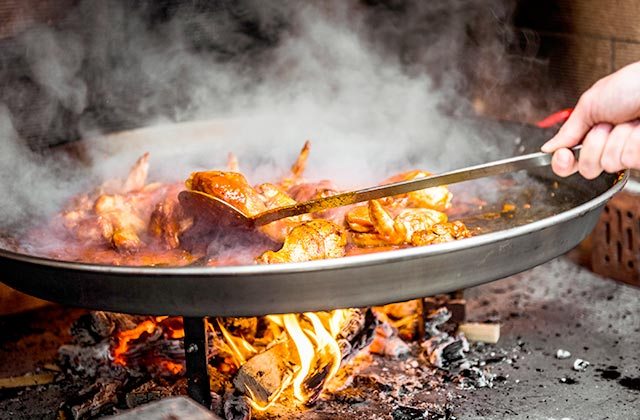
Paella is really a different way of cooking rice. This ingredient is loose and dry, which is the essential part of paella. Although this is the main secret of this Spanish culinary treasure, the positive thing is that you can cook it in a thousand different ways. Although some recipes are widespread, you can make paella to your own tastes. The rice absorbs the flavour of any ingredient you add, and you can mix as you please. There are many restaurants which allow diners to choose what items to include in their paella. As such, if you come to Spain with very specific tastes, add them to this dish and it will give you fond memories of good Spanish cooking.
If you are thinking to get away to Spain, try out its star dish. You can try all the varieties we mention above, especially in coastal areas.
Curiosities about paella
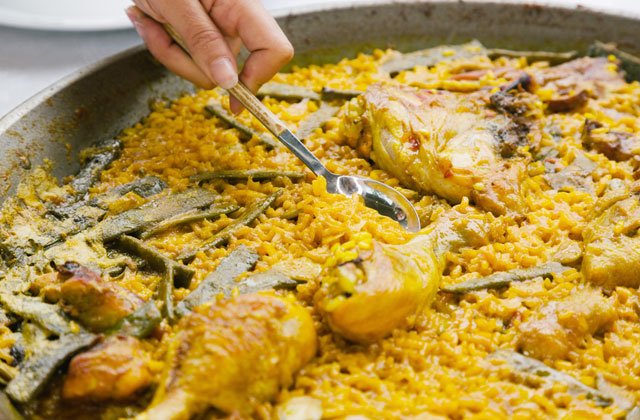
- Humble origins: Paella originates from the Valencia region on the east coast of Spain. It was initially a meal for peasants and workers, made with inexpensive and accessible ingredients such as rice, fresh seasonal vegetables, and whatever meat (rabbit or chicken) that was available.
- Origin of the name “paella”: The term could derive from the Latin word “patella”, meaning frying pan. Alternatively, it comes from a romantic story in which a man cooked this dish “for her” (para ella), which eventually evolved into “paella”.
- Name of the utensil: The word “paella” refers to both the dish and the container in which it is cooked. The “paellera” is the large, flat pan used to cook the rice. This utensil is crucial for achieving the correct evaporation and absorption of the broth.
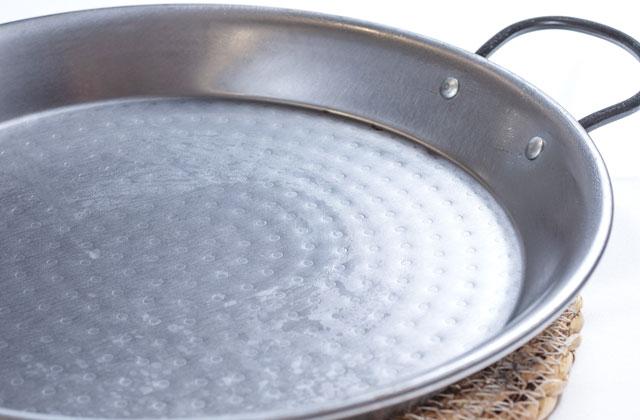
- Regional varieties: Although the internationally known version is the Valencian paella, which typically includes rabbit, chicken, green beans, and sometimes snails, there are many other variants in Spain. For example, seafood paella is very popular in coastal areas, while inland they may prefer the mixed paella, which combines meats and seafood.
- The special touch of the socarrat: One of the secrets to a good paella is the socarrat, the layer of toasted rice that forms at the bottom of the pan when it is cooked to perfection. It is so appreciated that many consider it the best part of the dish.
- A dish for special occasions: In many parts of Spain, paella is more than just a meal; it is a central part of celebrations and family gatherings. Traditionally, it is prepared on Sundays or during festivities and is eaten directly from the paellera, shared by everyone from the same container.
- Unwritten rules: There are many unofficial “rules” about what constitutes an authentic Valencian paella. For example, it is not considered appropriate to include chorizo in Valencian paella, although it is common in versions for tourists.

- Paella vs. rice with things: In Spain, it is common to hear Valencians say that there are only a few types of authentic paella and that the rest are simply “rice with things”. This underscores the importance of adhering to specific traditions and recipes for a dish to be considered true paella.
- International Paella Day: International Paella Day is celebrated each year on 20 September. It is a time to celebrate and enjoy this dish with friends and family, spreading the culture and culinary traditions of Valencia around the world.
- Innovation and creativity: Although tradition is fundamental in the preparation of paella, many contemporary chefs have experimented with non-traditional ingredients, creating innovative versions that maintain the spirit of the original dish while introducing new and surprising flavours.
Gazpacho and salmorejo, the most famous summer soups in Andalucia
How to make sangria: the best summer drink
Where to stay in Andalucia

Restaruante El Buche – Fuerte Conil Resort
Southern Spain is without doubt a privileged destination. If you want to try a good Spanish restaurant, Andalucia has a wide variety. Paella is a dish par excellence which you can eat mainly in coastal areas, accompanied by a cool drink in the sun which bathes the Mediterranean.
If you like the sound of this, we recommend you stay at Fuerte Hoteles. Hotels and apartments with excellent service and quality according to Tripadvisor, and supported by over 60 years’ experience, are the best choice. Marbella, Conil, Grazalema, El Rompido or Torrox are some sites where you can find these great places to stay and enjoy good Spanish cooking.
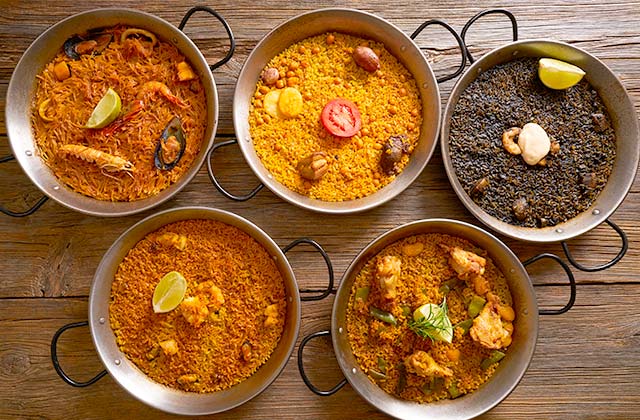







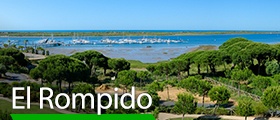








Where can I find a recipe for the Pork in Beer version? I didn’t find much success looking online for this variation.
Dear Heater
I’ll copy below a few links with the info you’re asked
http://catinabarbero.blogspot.com.es/2016/09/arroz-con-magra-de-cerdo-la-cerveza.html
https://www.youtube.com/watch?v=sSzMCRfckoc
https://arroz-con-magro-a-la-cerveza.recetascomidas.com/
I`m hungry right now jaja. All this plates look great
With your permission, I recomend a place where we I learned to cook a Valencian Paella. In thesse Valencia paella cookin class, they explain everything. If you go to Valencia sometimes I Recommend https://escueladearrocesypaellas.com/en/